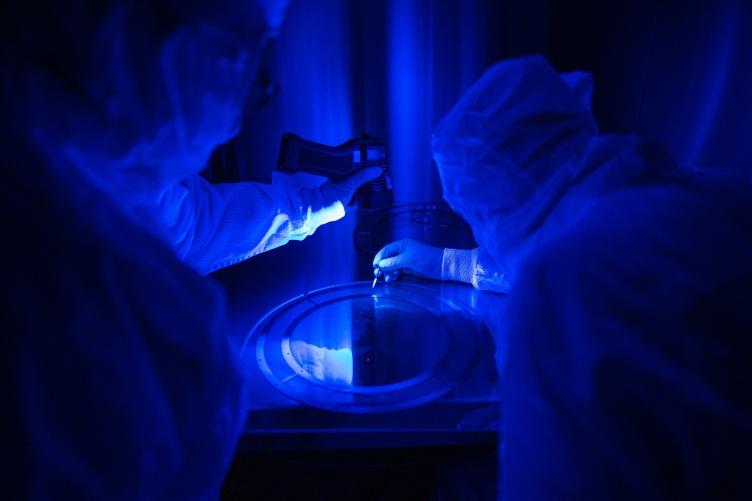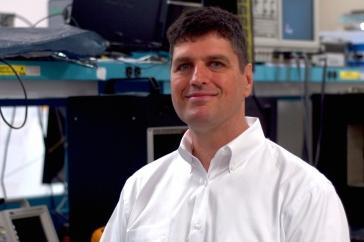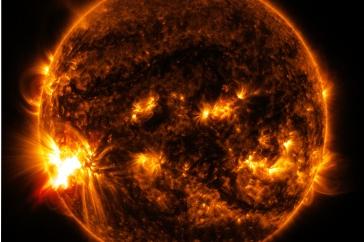
In a darkened clean room lit solely by an ultraviolet light, 主要研究 flight laboratory manager Skylar Volger (left) and lab technician Amanda Wester '22 (right) examined a thin metal disk full of perfectly round, 小孔。, and gently wiped away all the dust particles they encountered on its surface. The disk was then stacked on top of others identical to it to form what's called a collimator -- a piece of equipment destined for space that will ultimately help scientists map the boundaries of our heliosphere: the magnetic bubble that surrounds and protects our solar system.
"The collimator effectively works like the blinders on a horse -- it limits the field of view of the instrument so that everything (light and plasma, 例如)从受限的, 明确的方向,乔纳森·鲍尔(Jonathan Bower)解释道, 该项目的联合国大学校准科学家. "This limits the interference of solar wind plasma and stray light while allowing us to view the interstellar neutrals coming from outside our solar system."
The collimator is just one of the components being built at 主要研究 for NASA's Interstellar Mapping and Acceleration Probe (IMAP) mission计划于2025年初发射. The heliosphere is a region where the constant flow of particles from our sun, 叫做太阳风, 与银河系其他地方的物质相撞, limiting the amount of harmful cosmic radiation entering the heliosphere. IMAP will collect and analyze particles that make it through the heliosphere’s protection.
-
写的:
丽贝卡Irelan 地球、海洋与空间研究所 丽贝卡.irelan@dctdsj.com | 603-862-0990



















































